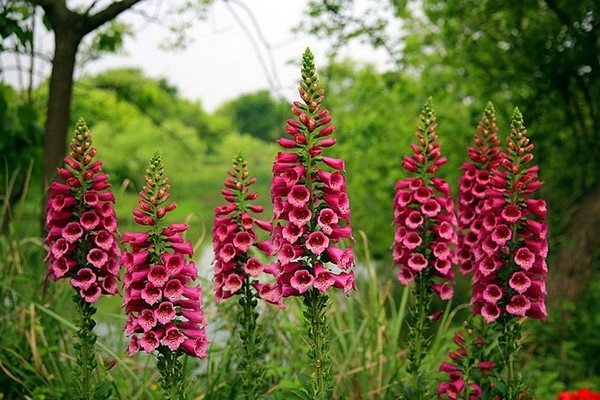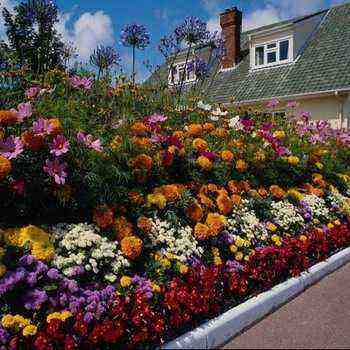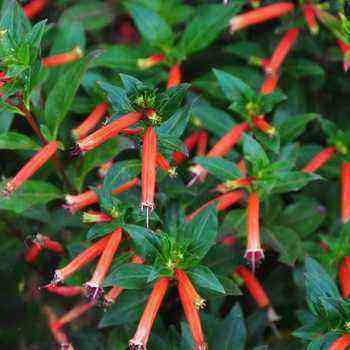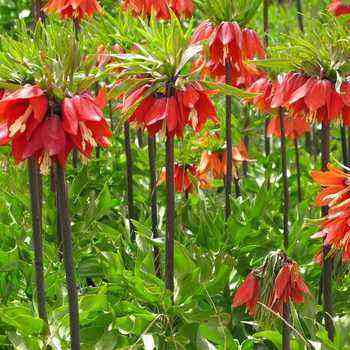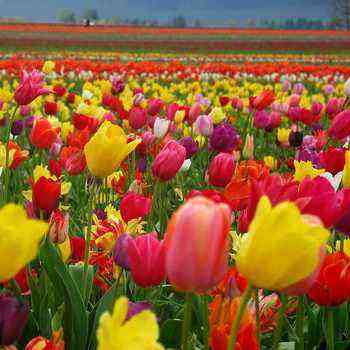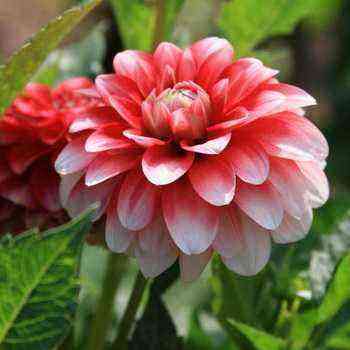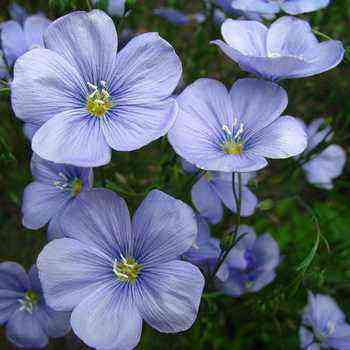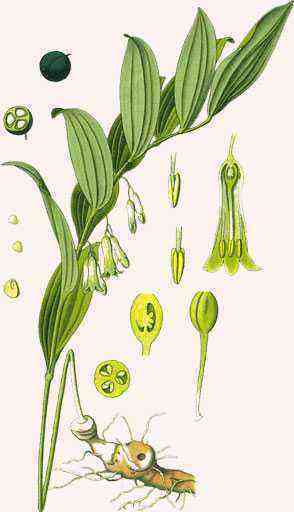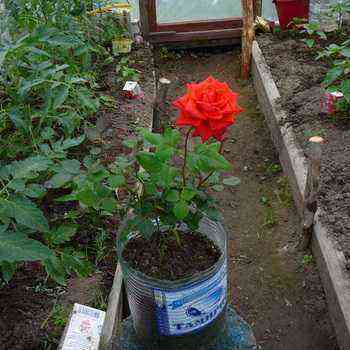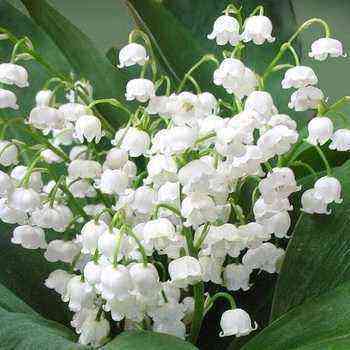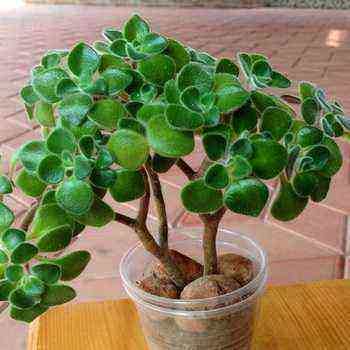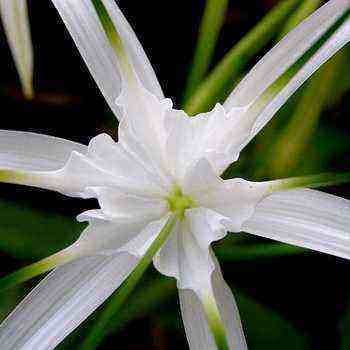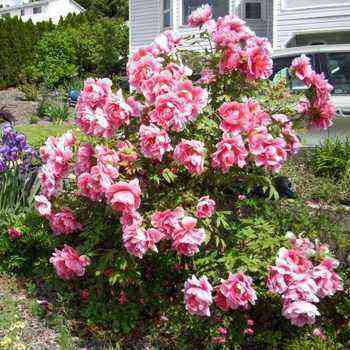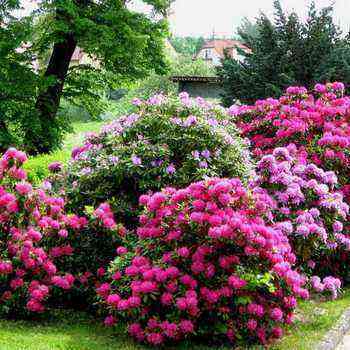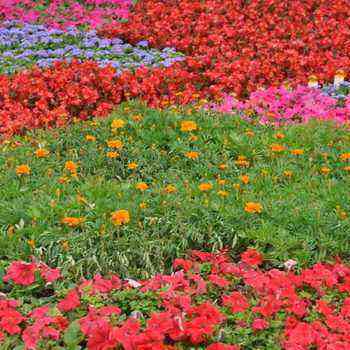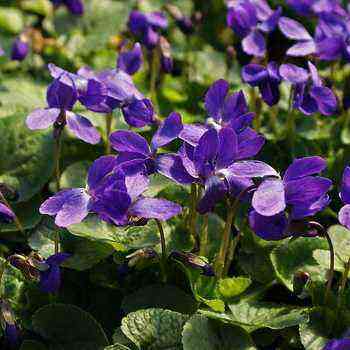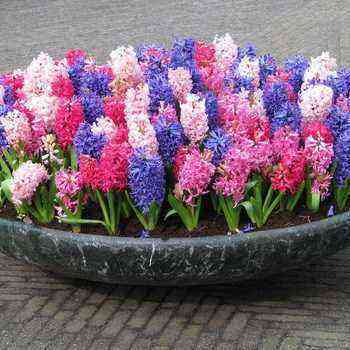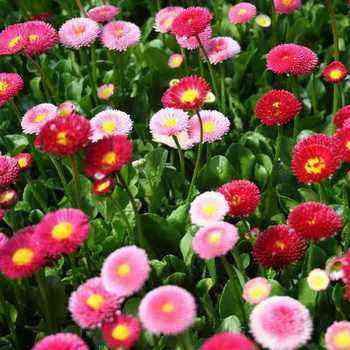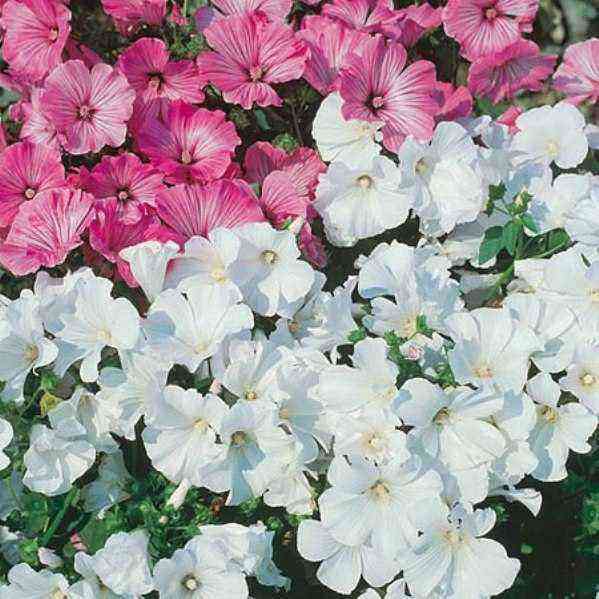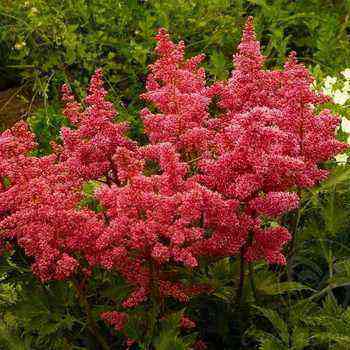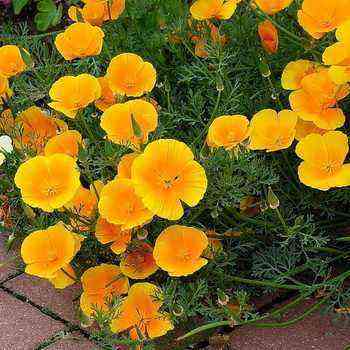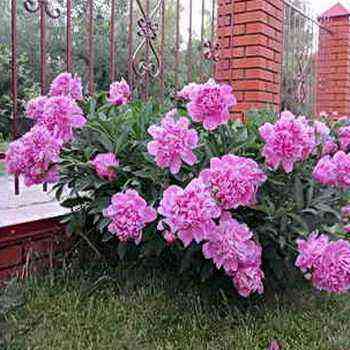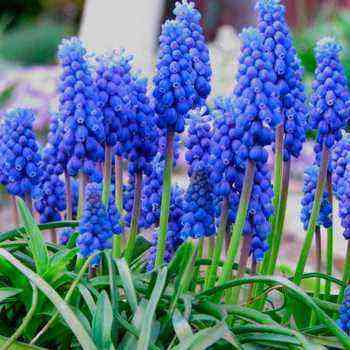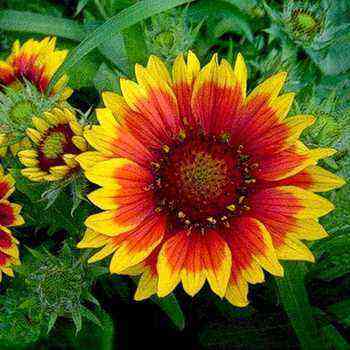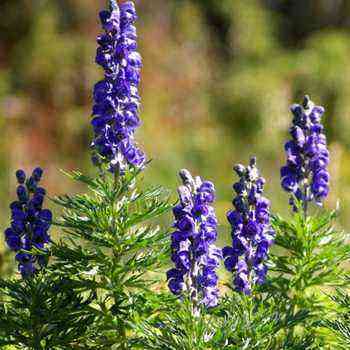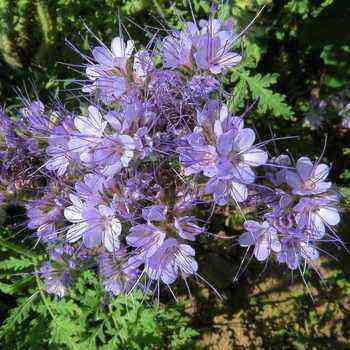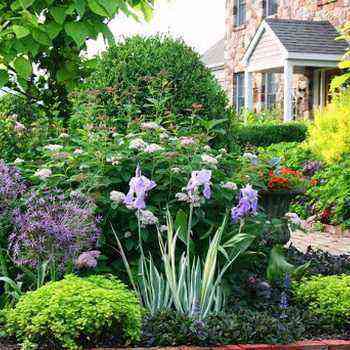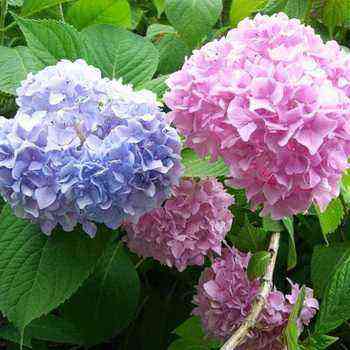
In flower decoration, biennials can be used everywhere. Low-growing species look great in the form of a border, in joint plantings with bulbs (tulips, daffodils, muscari, hyacinths, dwarf irises, etc.), are widely used as a container culture. When growing biennial crops, their characteristics should be taken into account.
Examples with photos and titles
Among such plants there are both real biennials, in which after flowering in the second year, the life cycle ends and they completely die off (middle bell, biennial lunaria, purple foxglove), and perennial crops, in which decorativeness after the second wintering falls, and some of the plants die (remember the bearded carnation, which in the summer after flowering the hand does not rise to throw away, and in the spring of the next year you do not want to look at it). This group also includes other perennial crops (perennial daisy, forest forget-me-not, pansies, female hesperis), which are used as biennials.
One of the advantages of most biennials is their ability to bloom in low light conditions, i.e. in partial shade (viola, Turkish carnation, daisy, foxglove, forget-me-not, hesperis). True, in this case, the color of the flowers will be less bright.
Plants that belong to biennials are subdivided into spring plants by flowering time:

viola
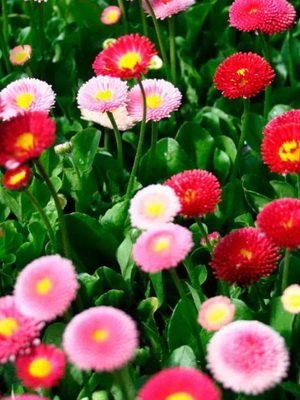
daisy
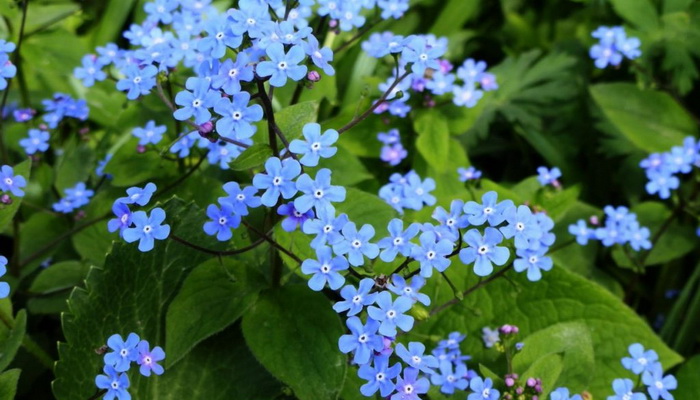
Forget-me-not
summer:
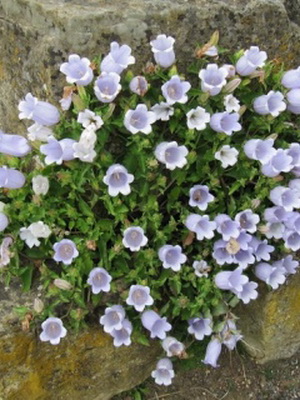
campanula
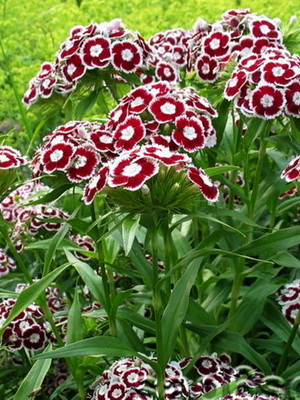
clove
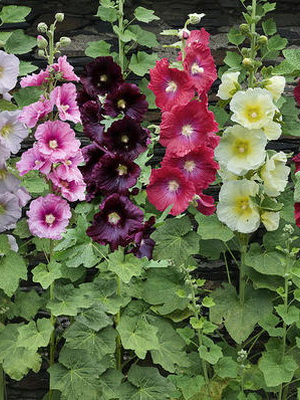
stockrose
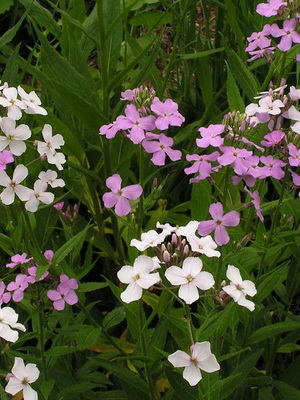
hesperis

digitalis
Spring-flowering species are especially popular, since with their help the shortage of flowers in late April – May is easily compensated. Summer flowering species are widely used in groups, mixborders or for cutting:
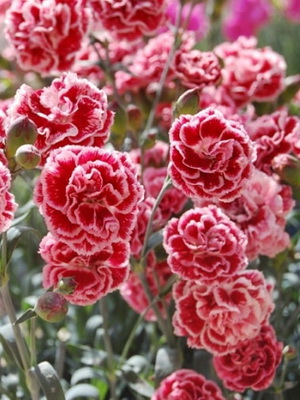
clove

bell
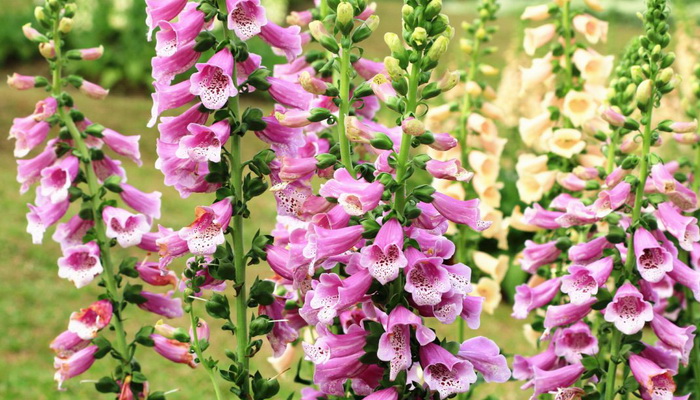
digitalis
Based on the growth of flowering biennial plants, they are divided into low (about 20 cm), medium and high:
- low (about 20 cm) – daisy, viola, forget-me-not;
- medium (40-60 cm) – Turkish carnation, middle bell, female hesperis;
- high (more than 100 cm) – stock-rose, foxglove.
In tall biennials, in particular in purple foxglove, peduncles often break in windy weather, so it is better to tie them to a support, for example, to bamboo sticks.
Examples of biennial plants, the names of which are given above, are shown in these photos:
Cultivation
Blooming biennials are pretty easy to get. Sowing seeds is carried out in open ground, on a specially designated bed (seedlings need shading). Seeds are usually sown in late May – early June. Seedlings appear in two weeks, they are cut or thinned out at the stage of two or three true leaves at a distance of 10-15 cm. It is better to plant the plants in a permanent place in the spring, and for the winter it is recommended to cover most species with spruce branches – to protect them from frost and rodents.
One of the features of growing biennial plants is strict adherence to the planting scheme. This is done to ensure that cultures develop evenly. For example, viola, daisy, forget-me-not are planted in flower beds after 15-20 cm, Turkish carnation – after 20-25 cm, middle bell -40 cm, mallow – 40-60 cm, foxglove – after 30-40 cm.
All biennials produce annual and abundant self-seeding. To obtain high-quality plants from self-seeding, it is necessary to carry out timely thinning or planting of seedlings. True, with such a cultivation of biennials, a gradual loss of decorative qualities occurs, as a result of which a nondescript, small and certainly not terry relative can be obtained from a beautiful terry daisy of the Schneebal variety. To preserve varietal qualities, vegetative propagation methods should be used, in particular, cuttings and division of the bush.
Use in flower beds
Using biennials in flower beds, it must be remembered that after flowering, most of them completely lose their decorative effect, especially spring-flowering species.
In June, as a rule, they are replaced by flowering annuals or other crops. Biennials are planted in mixborders in small groups so that after the loss of decorativeness, the general appearance of the flower garden is not affected.
Only foxglove purple has some restrictions on use. The fact is that the substance digitalin contained in the digitalis cell juice has long been used in pharmacology for the manufacture of heart drops, but large doses of this substance can cause cardiac arrest. Children often play using nearby greens. The consequences of such a game are unpredictable. Therefore, in areas where there are small children, the use of foxglove should be limited or eliminated altogether.





